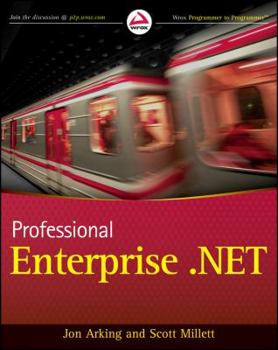Professional Enterprise .Net
Comprehensive coverage to help experienced .NET developers create flexible, extensible enterprise application code If you're an experienced Microsoft .NET developer, you'll find in this book a road map to the latest enterprise development methodologies. It covers the tools you will use in addition to Visual Studio, including Spring.NET and nUnit, and applies to development with ASP.NET, C#, VB, Office (VBA), and database. You will find comprehensive coverage of the tools and practices that professional .NET developers need to master in order to build enterprise more flexible, testable, and extensible .NET applications with minimal upfront costs. Helps C#, VB.Net, and ASP.NET developers who wish to migrate both their applications and their own skillsets to newer, more flexible enterprise methodologies Describes each new pattern or feature along with its benefits, then outlines the pros and cons of its implementation Includes an introduction to enterprise development and a comprehensive overview of the differences between new enterprise patterns and older, traditional Microsoft programming Explains how to implement these patterns by upgrading an existing code base Covers benefits including flexibility, automated testing, extensibility, and separation; modular code; test-driven development, unit test, test automation, and refactoring; inversion of control; and object relational mapping Also covers enterprise design patterns: MVC including Ruby on Rails, Monorail, and ASP.NET MVC, MVP, observer, and more Contains a primer on object-oriented design Professional Enterprise .NET focuses on the often-inevitable compromise between forward-thinking design and the needs of business, helping you build applications that serve both.
Format:Paperback
Language:English
ISBN:0470447613
ISBN13:9780470447611
Release Date:September 2009
Publisher:Wrox Press
Length:474 Pages
Weight:1.96 lbs.
Dimensions:1.0" x 7.3" x 9.2"












